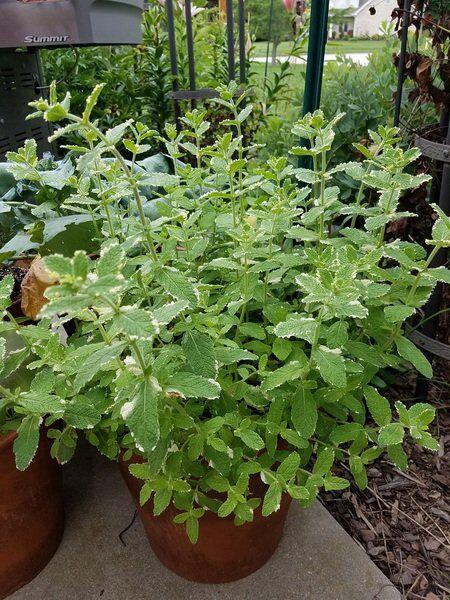
Culinary herbs can add variety and splashes of color to any deck, balcony or patio. This makes them an excellent option for many small space gardeners.
“My favorite group of plants to grow is culinary herbs,” said Jennifer Fishburn, a University of Illinois Extension horticulture educator. “These plants are good fillers in perennial and herb gardens, and many are a source of pollen and nectar for pollinating insects.” The same herbs that add flavor to your favorite food dishes do well in containers, Fishburn said. The herbs used in container gardening can be planted either alone or mixed with annual flowers or vegetables. They will need to receive full sun.
Creative gardeners can use containers made out of most anything that holds growing media and has drainage holes. The latter prevent root rot. Be sure to plant the appropriate number of plants in the right-sized vessel.
“Select a container large enough to allow space for root growth,” Fishburn said. “For good root growth, most herb plants will need a soil depth of 6 to 8 inches. Taller plants, such as dill and fennel, need at least a depth of 10 inches to thrive.” A 12-inch container will hold about three or four herb plants, while a 15-inch container can support about five or six of them.
Gardeners can also choose plants based on a theme. For example, pair chocolate mint with a strawberry plant for a take on chocolate-covered strawberries. Design a pizza garden with a container filled with oregano, sage, thyme, marjoram, and winter savory. Or create a “lemon drop” using lemon basil, lemongrass and lemon verbena.
Every container must contain a good quality potting media that is sterile, retains moisture, and allows for aeration. And since container-grown plants will need fertilizer throughout the growing season, purchase a potting media with slow-release fertilizer. A soluble complete fertilizer added after planting is also a good solution.
“Apply soluble fertilizers at a low application rate,” Fishburn said. “Too much fertilizer will cause herb plants to grow quickly, reducing flavor and aroma.”
Drought-tolerant herbs do particularly well in containers. Tender, perennial herbs such as rosemary are good choices as well. Plants with a trailing habit look nice cascading over the edge of a pot. Container gardens must be carefully watered; their most common problem is under- or over-watering. Over-watering may cause root rot, fungal problems, or fungus gnats. Symptoms of over-watering include wilting and reduced growth. Under-watering symptoms include wilting and scorching. As with over-watering, repeated wilting will stunt growth. To water correctly, apply water until it runs out the drainage holes. Containers dry out quickly so check containers at least twice a day on hot, dry, windy days.
Harvest herbs regularly to keep plant growth compact and bushy. They are easy to maintain, can grow in almost any full sun location, and give gardeners the satisfaction of eating the fruits of their labor.
The Link LonkApril 24, 2021 at 11:00AM
https://ift.tt/3sJB5lP
Small-batch culinary herbs add flavor to gardening menu - Terre Haute Tribune Star
https://ift.tt/3eCf9lu
Herb
No comments:
Post a Comment